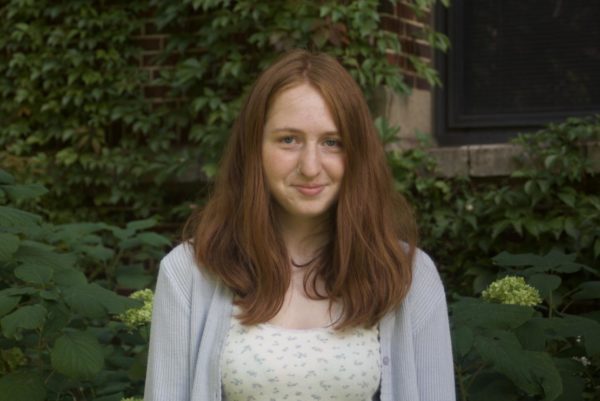Opinion | Student resource officers jeopardize students’ safety
Sixteen years ago, ETHS took a step backwards. What was once an environment to learn became an environment ruled by stringent punishment and prison-like circumstances. That year, Evanston introduced the first of its Student Resource Officers to the hallways of ETHS, and since then, the officers’ presence has done nothing but contribute to a culture of racial profiling and unrest.
“There’s always that fear that a police officer will mistreat me. I shouldn’t have to feel that way anywhere, let alone at school,” African-American senior Ashley Cocrane explains.
During passing periods, students’ only worry should be making it to class on time, but for the last 16 years, with such a daunting police presence, that focus has shifted into something entirely worse: their safety.
“Because they’re known for not being really protectful, it’s a bit scary to see [SROs] with loaded guns and bullet-proof vests,” African-American senior Eric Kasule elaborates. “And, yes, in the case that there is a shooter, [they] would probably be helpful, but when there isn’t, it’s kind of like, ‘Oh, hey, police in my school hallway. Please don’t shoot me.’”
Cocrane and Kasule’s fears are not unjustified. According to a report published by the Moran Center in December of 2021, while Black students make up a quarter of ETHS’ population, they account for 77 percent of arrests made by student resource officers. Meaning, Black students are literally 300 percent more likely to be arrested while at school than their white peers.
Once detained, many of these students are referred to the juvenile justice system, ultimately creating a direct pipeline from ETHS to prison—all for a conflict that could have been resolved without police interference.
“Students that attend schools with SROs are also significantly more likely to be arrested for discretionary criminal violations, such as disorderly conduct or battery, than those at schools without SROs,” the Moran Center report reads. “Without police proximity and involvement, these behaviors could be calmly and routinely deescalated and resolved by school staff. However, when SROs observe this behavior or when an SRO can easily be called on by school staff due to their proximity, routine school discipline issues can quickly escalate into police matters. … Once an SRO has been notified, police actions, such as arrests and juvenile justice referrals, are determined by the SRO—not the school.”
Thus, the very thing that should be there to protect students is the very thing putting them in harm’s way.
“I would feel a lot safer if the police were removed from the building,” Cocrane says.
In fact, most research suggests that SROs are entirely ineffective in responding to the conflict they are supposed to be used for. One study by the Annenberg Institute at Brown University found that SROs have not been successful in preventing shootings or gun-related violence in schools. Another by the University of Albany saw the same result: SROs just aren’t that useful.
African-American junior Aliya Gillon finds that the school safety personnel are already responsible for the work of an SRO.
“I understand [SROs are] trying to keep us safe, but I see safety doing that work,” junior Aliya Gillon notes. “[The safety officers] actually build bonds with the students, while [the student resource officers] just make me feel uncomfortable.”
Of course, removing SROs from ETHS will not eliminate conflict, so instead, ETHS should hire more safety personnel, social workers and administrators who are better informed at providing disciplinary advice through a holistic and restorative lens. Instead of punitive punishments that might ruin a student’s life, ETHS might finally allow students to repair their mistakes and seek support by enlisting these positions to take on the responsibilities of SRO’s.
However, this problem doesn’t end with SROs. Between disciplinary policies and school environment, ETHS has a long way to go in terms of dismantling the school-to-prison pipeline.
“Students of color at ETHS usually receive worse consequences than white students because we’re looked at differently,” Gillon concludes. “We usually have to go above and beyond just to be treated fairly.”
Your donation will support the student journalists of the Evanstonian. We are planning a big trip to the Journalism Educators Association conference in Philadelphia in November 2023, and any support will go towards making that trip a reality. Contributions will appear as a charge from SNOSite. Donations are NOT tax-deductible.













VH • Sep 8, 2022 at 5:02 pm
well said!!